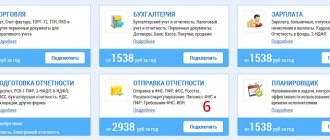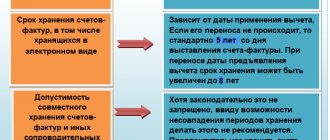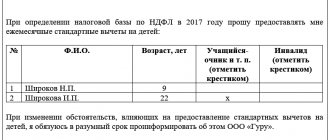- Salary indexation in 2021. Increase for commercial employers
- Increase in wages in commercial organizations in 2018. Indexation terms
- Increase in wages in commercial organizations in 2018. How long?
- Increase in wages in commercial organizations in 2018. Fines for not increasing wages
- Increase in wages in commercial organizations in 2018. Which payments should be indexed?
- Increase in wages in commercial organizations in 2018. Indexing procedure and documents
- Indexation order
- Additional agreement to the contract
- Increase for state employees
- Salary indexation in 2021, Government decree. Answers to frequently asked questions
Increase in wages in commercial organizations in 2021. Indexation terms
The deadlines are established in the collective agreement with the employee. This is usually February 1, since by this time Rosstat announces official inflation for the previous year.
But that could be another day. For example, January 1 or March 1.
If indexation starts on February 1, then workers should receive an increased salary for February. And they will receive such a salary until February 1 of the next year, when the next indexation occurs.
Try calculating your salary in the Simplified 24/7 .
It allows you to maintain tax and accounting records and prepares primary documents and reporting in one click. Take a trial access to the program for 30 days. Consultation on all accounting issues is available to users 24 hours a day, 7 days a week.
Indexation coefficient
When choosing a method for calculating the remuneration indexation coefficient, a company can use:
- Approved consumer price growth index. Its significance can be approved both by the federal authorities and at the regional level. The subject independently chooses which value he will use during the salary increase. This point should be reflected in the local acts of the organization.
- The inflation rate officially adopted by government authorities for the purpose of indexing the salaries of public sector employees. This indicator can also be adopted by the federal authorities or a federal subject. By government decree, this figure for Russia as a whole is set at 4% in 2021.
- The growth rate of the cost of living for the employed population. This indicator can also be federal or regional.
- Another indicator chosen by the employer in agreement with the trade union bodies at the enterprise, recorded in the relevant Regulations of the organization.
Attention! When choosing a method for calculating the indexation coefficient, you must also take into account its validity, since regulatory authorities, for example, tax authorities, may question these expenses and refuse to include them in the tax base. The most important thing is to correctly formalize the choice in local documents. Therefore, many companies prefer to take official indicators as a basis.
Increase in wages in commercial organizations in 2021. Which payments should be indexed?
The company has the right to prescribe that it indexes only salaries (letter of Rostrud dated 04/19/2010 No. 1073-6-1). Companies already calculate most additional payments (for night time, weekends, etc.) as a percentage of the salary, so these payments will also increase after indexation.
Some firms believe that they can refuse indexation of salaries if they pay bonuses. But this is a misconception for which the company will be fined (decision of the Sverdlovsk Regional Court dated April 19, 2017 No. 72-481/2017). After all, paying premiums is a right, and indexation is an obligation.
The procedure for salary indexation in 2019
Step 1. Check the salary situation
Data on salary indexation must be specified in one of the organization’s internal documents. The most convenient way to do this is in the Regulations on Remuneration.
Often the requirement to include such a clause in a document comes from the company’s trade union. They can formulate their proposal and send it to the administration for consideration. However, the management itself can take the initiative to change internal documents, and therefore submits the project for discussion by the trade union or work collective.
It is necessary to issue an order that made the necessary changes; this document indicates:
- Order to introduce a new section “Procedure for indexation of wages” into the Regulations;
- List the points of the new section that will determine the date and size of indexing. It is allowed to index employee earnings not once a year, but after each quarter based on the price index established in it;
- Determine those responsible for executing the order and communicating its contents to employees.
In the future, this step is omitted, and indexation is performed by issuing an order from the manager with reference to this section of the Regulations.
Attention! If indexation is a serious process, with different indexation coefficients being set for different categories of employees (but not less than the minimum amount), then instead of amending the Regulations on wages, it would be better to develop a separate Regulation on wage indexation.
Step 2. Calculate the new salary amount
The responsible employee must calculate the new earnings of all employees. The coefficient used is the value specified in the Regulations on remuneration or other internal document. Typically, the consumer price index for the previous year is used for these purposes.
You might be interested in:
Application for transfer of salary to a bank card: why it is written, how to write it correctly
Since the Labor Code specifies the requirement for wage indexation, it includes not only the salary part, but also compensation, incentive payments, additional payments for work in other conditions, etc. Thus, indexation must be carried out in full on all parts of the salary. Failure to comply with this requirement may result in a fine being imposed on the employer.
Attention! Based on the calculations received, a new staffing table is drawn up, or changes are made to the existing one by order of the director. However, given the number of changes, it is best to issue and accept a new document.
Step 3. Issuing an indexation order
The manager must issue an order for the enterprise to index wages.
The document states:
- The basis is the Labor Code, as well as the section from the Payment Regulations regarding indexation;
- An order to perform indexation by the established coefficient;
- Order to put into effect a new staffing table;
- An order to carry out further salary calculations taking into account this order.
Step 4. Execution of additional agreements
The section of the employment agreement with the employee on the level of his salary is an essential condition. Therefore, its change is possible only with the consent of the employee himself.
To secure the new amount of earnings, it is necessary to draw up an additional agreement. This form is issued in two copies, the employee must sign each and the company copy must also be marked as having been received.
Increase in wages in commercial organizations in 2021. Indexing procedure and documents
The indexation procedure must be established by the employer himself in a collective agreement, agreement, or local regulatory act - see examples below.
Wording on salary indexation in the collective agreement
Write down the indexation clause in the contract: The employer undertakes to index wages in accordance with the current legislation of the Russian Federation on the basis of data from the State Statistics Committee of Russia on the consumer price index. The employer undertakes to index wages at least once a quarter.
Wording on wage indexation in the wage regulations
Write down the indexation clause in the contract: The Employee’s salary is indexed in connection with the increase in consumer prices for goods and services. At the end of each quarter, the Employer increases employee salaries in accordance with the consumer price growth index, determined based on Rosstat data. Salary, taking into account indexation, is paid to the Employee starting from the first month of each quarter.
What does the coefficient apply to?
So, every year, numerous social payments, including benefits for the birth and raising of children, are revised based on the consumer price growth index for the previous year in accordance with the indexation coefficient approved by the Government of the Russian Federation.
The full list of payments to which the indexation coefficient is applied for 2021 is established in the Decree of the Government of the Russian Federation "On approval of the amount of indexation of payments, benefits and compensation in 2021"
This indexation procedure was already in effect in 2021, 2021. However, it was temporary. Starting from the New Year (2018), this algorithm became permanent. Indexation for 2021 will be the first to be carried out on an ongoing basis according to the new procedure. These are the rules established by Federal Law No. 444-FZ dated December 19, 2016 “On introducing changes to the procedure for indexing payments, benefits and compensation.”
Initially, the Government developed a plan for a two-stage increase in the minimum wage. It was planned to increase the minimum wage to the subsistence level in two stages:
- in 2021, the minimum wage was increased to 85% of the subsistence level and from January 1 will be 9,489 rubles. (Federal Law of December 28, 2017 No. 421-FZ “On amendments to certain legislative acts of the Russian Federation regarding increasing the minimum wage to the subsistence level of the working population”);
- in 2021, the minimum wage was planned to be increased to 100% of the subsistence level.
However, then it was decided to hurry up with bringing the minimum wage to 100% of the subsistence level and to do this not from January 1, 2019, but from May 1, 2021. Thus, from May 2021 the minimum wage will be 11,163 rubles.
For more information about this, see “The size of the minimum wage from January 1, 2018.”
Please note that the indexation of benefits for 2021 according to the new permanent rules will affect the following child benefits:
- maternity benefits paid to women from among the civilian personnel of military formations of the Russian Federation located in the territories of foreign states, as well as to women dismissed due to the liquidation of organizations or termination of activities by individuals as individual entrepreneurs (with the exception of maternity benefits, paid to women subject to compulsory social insurance in case of temporary disability and in connection with maternity);
- a one-time benefit for women who registered with medical organizations in the early stages of pregnancy;
- lump sum benefit for the birth of a child;
- monthly child care allowance;
- a one-time benefit when placing a child in a family;
- a one-time allowance to the pregnant wife of a military serviceman undergoing military service;
- monthly allowance for the child of a military serviceman undergoing military service.
Indexation of benefits from February 1
From February 1, 2021, benefits in Russia were indexed by 2.5% in accordance with Government Decree No. 74 dated January 26, 2018. This increase will affect the majority of one-time and monthly social payments and will affect all employers.
The indexation coefficient this year is 1.025. It was established based on Rosstat’s estimate of actual inflation for 2021. We also remind you that from January 1, 2021, the minimum wage was significantly increased - to 9,489 rubles. So that you don’t get confused about who needs to pay and how much now, we have prepared a table on the amount of benefits, insurance premium rates and minimum wage.
| Index | Size in 2021 | Base | ||||
| Minimum wage | As of 01/01/2018 RUB 9,489 rub. | Federal Law of June 19, 2000 N 82-FZ (as amended on December 28, 2017) “On the minimum wage” | ||||
| Benefits | As of 02/01/2018 | |||||
| At the birth of a child | RUB 16,759.09 | Decree of the Government of the Russian Federation of January 26, 2018 N 74 “On approval of the indexation coefficient for payments, benefits and compensation in 2021” | ||||
| When registering in early pregnancy | RUB 628.47 | |||||
| Minimum benefit for caring for the first child up to one and a half years old | RUB 3,142.33 | |||||
| Minimum benefit for caring for a subsequent child up to one and a half years old | RUB 6,284.65 | |||||
| Funeral benefit | RUB 5,701.31 | |||||
| Minimum average daily earnings for calculating benefits in 2018 | If an insured event occurs | |||||
| After 07/01/2017 | From 01/01/2018 | |||||
| RUB 256.44 | RUR 311.97 | |||||
| Maximum average daily earnings for calculating benefits | RUB 2,017.81 | (RUB 755,000 + RUB 718,000) / 730 days | ||||
| If the vacation started in 2021 RUB 23,120.66 | If the vacation started in 2021 RUB 24,536.57 | |||||
| Maximum monthly disability benefit due to an accident or occupational disease | RUB 300,728.00. | From 01/01/2018 = 4x 75,182.0 rub. | ||||
| Limit value of the base for calculating insurance premiums | in the Pension Fund of the Russian Federation – 1,021,000 rubles. in the Federal Compulsory Medical Insurance Fund - not applicable in the Social Insurance Fund - 815,000 rubles. | Government Decree dated November 15, 2021 N 1378 | ||||
| Insurance premium rates for employers | ||||||
| Basic tariff | Up to 815,000 rub. | 30% (22% PFR + 5.1% FFOMS + 2.9% FSS) | Art. 426 Tax Code of the Russian Federation | |||
| From 815,000 to 1,021,000 rubles. | 27.1% (22% PFR + 5.1% FFOMS) | |||||
| Over 1,021,000 rub. | 15.1% (10% PFR + 5.1% FFOMS) | |||||
| Business societies created by budgetary scientific and educational institutions (clause 1, clause 1, article 427 of the Tax Code of the Russian Federation | 21% (13% PFR + 5.1% FFOMS + 2.9% FSS) | pp. 1 and clause 1.1 clause 2 art. 427 Tax Code of the Russian Federation | ||||
| Organizations with resident status of a technical and innovation SEZ (clause 2, clause 1, article 427 of the Tax Code of the Russian Federation | ||||||
| Organizations operating in the field of information technology (clause 3, clause 1, article 427 of the Tax Code of the Russian Federation | ||||||
| 14% (8% PFR + 2% FFOMS + 4% FSS) | ||||||
| Payers using the simplified tax system with the main type of activity specified in paragraphs. 5 p. 1 art. 427 Tax Code of the Russian Federation if income does not exceed 79 million rubles | 20% (20% Pension Fund) | pp. 3 p. 2 art. 427 Tax Code of the Russian Federation | ||||
| Pharmacy organizations and individual pharmacists paying UTII (clause 6, clause 1, article 427 of the Tax Code of the Russian Federation | ||||||
| NPOs that use the simplified tax system and carry out activities in the field of social services. services to the population, scientific developments, healthcare, culture and art (clause 7, clause 1, article 427 of the Tax Code | ||||||
| Charitable organizations on the simplified tax system (clause 8, clause 1, article 427 of the Tax Code of the Russian Federation | ||||||
| Individual entrepreneur with a patent taxation system (clause 9, clause 1, article 427 Tax Code of the Russian Federation (except for individual entrepreneurs with activities specified in paragraph 19 48 clause 2 of article 346.43 of the Tax Code of the Russian Federation | ||||||
| Organizations that have received the status of a participant in the Skolkovo project (clause 10, clause 1, article 427 of the Tax Code of the Russian Federation | 14% (14% Pension Fund) | pp. 4 paragraphs 2 art. 427 Tax Code of the Russian Federation | ||||
| Payment to ship crew members from registered organizations. in the Russian International Register of Ships, for the performance of labor duties as a member of the ship’s crew (clause 4, clause 1, article 427 of the Tax Code of the Russian Federation | 0% | pp. 2 p. 2t. 427 Tax Code of the Russian Federation | ||||
Attend an educational event on this topic:
%custom getevent (3371)%
What should be in the Regulations?
So, what should be contained in such a legal act? Firstly, it must indicate what exactly the employer is focusing on. As a rule, this is Rosstat. And the consumer price index is often taken as a reference value. Secondly, the local regulatory legal act should specify which specific method is used, that is, whether we are talking about forecasts or those figures that have already been established after the fact.
In addition, if the company's management takes into account something else, then it must be sure to record it. For example, instead of the consumer price index, some people choose the official inflation rate as a guideline. And many are living wage indicators.
Among other things, do not forget that the payment mechanism must be transparent. That is, the Regulations outline a formula by which the employee will be able to check the correctness of specific amounts accrued to him. That is why this legal act must also contain coefficients.
However, calculations are far from the only thing that should be indicated. Timing is of great importance. How often does the employer carry out indexation? The company may choose to carry out such a procedure once a quarter, every six months or once a year.
It is necessary to establish which payments are subject to indexation. The company, as a rule, recalculates salaries and vacation pay. However, the employer, at its discretion, can extend this provision to payment of utilities, issuance of funds for transport, bonuses, etc.
Indexing results should always be reflected in specific documents. This may be a separate legal act dedicated to issues of remuneration. And do not forget that the amount of salary is an essential condition of the employment contract. So changes to it also need to be recorded in the Regulations.
What else should be included in this document? List of persons responsible for its implementation. And not by name, of course, but by specific positions. In addition, we must not forget that the adoption of the Indexation Regulation must be agreed upon with the trade union. To avoid problems with this, it should be stated directly in the text itself how exactly the opinion of representatives of the work collective will be taken into account.
In addition to all of the above, the Regulations must establish under what conditions indexation may not be carried out or may be postponed. For example, in a difficult financial situation for the company. If this is not specified, then it turns out that the organization must always implement it, and evasion of such a procedure will be considered a gross violation of the rights of employees.
After drawing up the Regulations and carrying out approval, the employer issues an order according to which this regulatory legal act comes into force on a specific date. And finally, you must remember to familiarize all employees with the internal document on indexing issues.
Please note that the Regulation alone will not be enough to change the salary. An additional agreement will need to be concluded with the employees’ employment contracts. The entire process takes on average about 2 months.
An interesting point: the employer can prescribe indexation in employment contracts. However, such a decision is unprofitable for the company’s management, since subsequently any change will need to be agreed upon with the other party. In addition, each employee will have the opportunity to go to court to protect their rights on the basis of violation of essential terms of the employment contract, which is usually considered worse for the employer. Therefore, in practice this rarely occurs.






